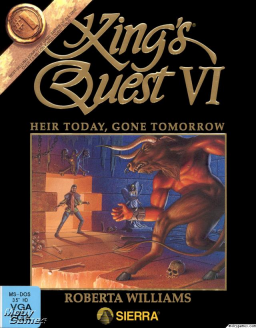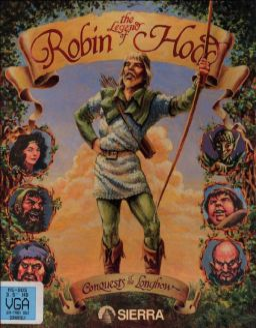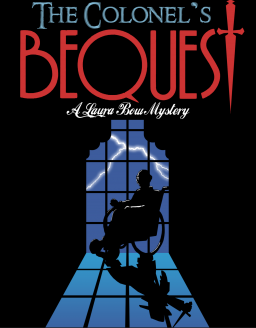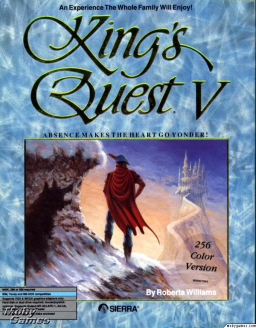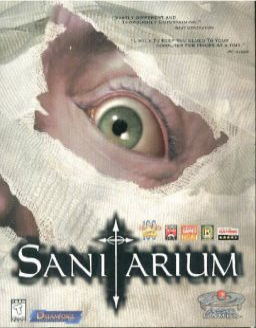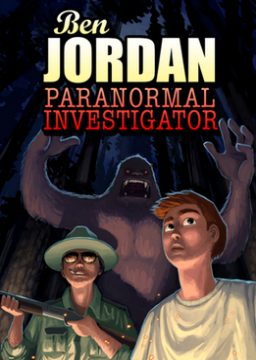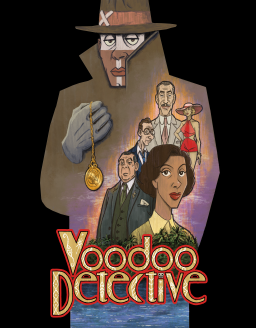#Text Mashing Fastest way to skip dialogue is mash space + spam click the top left Skip button. So that comes with some interesting choices on when to corner skip and when to instead space/double click skip + mouse prep dialogue.
Source: hyperformance
#Saving the Game
The game will save:
- every time you change scenes (with a couple exceptions)
- every time a conversation ends (and during some conversations)
- every time your inventory changes in any way
Source: Voodoo Detective developers
#Victor Fight
Victor won't have any weaknesses during the final fight until Private Eye is called. So you definitely cannot randomly pick a weakness just like you suspected. After that, it picks from a semi-random list of weaknesses. Any weakness you exploit will result in 25 damage. Any standard attack that's not a weakness will result in 7 damage. If you attack while he's blocking, it does 3 damage. If you attack using one of his weaknesses while he's blocking, it does 10 damage. Finally, if you attack him using a weakness while he's "in love," it does 34 damage.
Source: Voodoo Detective developers
Voodoo Detective only allows one save per playthrough, and is constantly autosaving. You cannot create manual saves.
This might be understandable for casual play, but is frustrating when routing a speedrun.
To get around this, first find the saves folder. For me, it was:
C:\Users<username>\AppData\LocalLow\Short Sleeve Studio\Voodoo Detective
You'll see the saves listed as "save_1.dat", "save_2.dat", etc.
When you get to a point that you want to save, copy the save file to a different directory and rename it something useful. When you want to load it, copy that save file back to the saves directory, and rename it to what it was originally.
Then, in the game, just go to the menu and click "Load." You do not need to restart the game.
Interestingly, the save files are in plaintext, so I believe you could edit those values directly and produce some interesting results.
A lot of these percentages are rounded. For example, a line of code might say "Choose a number between (and including) 0 to 100. If it's over 50, do something." Well, if you include 0, that's 101 numbers. So instead of being 50 / 50, it's actually 51 / 50.
Also, whenever I mention time, I'm taking the seconds listed explicitly in the game scripts. However, there's a bug with the timer that makes this inaccurate.
In short, whenever a script sets seconds, you lose the first second instantly and if you're lucky with the system clock subsecond, you'll lose another second very quickly. So, every time I mention "seconds," real time will actually be between one and (almost) two seconds faster.
Here are some script comments from ScummVM with technical details.
When Script:seconds is set, the first second is deducted on the next doit except in some cases when there are stale values from a previous delay. A one second delay is usually no delay at all. Subsequent seconds are deducted whenever the seconds value of the system clock changes. This means that the duration of the 2nd "second" depends on the system clock's subsecond value when the delay was requested. A script that requests a two second delay usually gets a random delay between zero and one second.
COPY PROTECTION (Floppy Only) At the bandit camp, the witch's house, and the mountain path, there's a 25% chance of getting copy protection. These rolls are independent from each other.
If you get to the boat and haven't had any copy protection, you automatically get it here. Otherwise, you don't get it here. There is no dice roll.
WITCH There's a 50% chance of her appearing on any screen (other than the first when you enter the forest). If you manage to get in front of her house, she will automatically show up there.
THE CASTLE Cassie will show up somewhere between 20 and 40 seconds. It's unclear to me whether this is from the time the room loads or whether it's when you get control of Graham.
If you're in a room where the blue beast can show up, the following will happen:
-
Make a random roll to see if the blue beast appears.
-
If that roll fails, and you're in a room where the cat can show up, then it will do another roll to see if the cat appears. This second roll is always 80% in favor of the cat appearing. (The overall chance of the cat appearing is less than 80%, because we have to take the first roll into account.)
-
If the blue beast roll from step 1 succeeds, then the game picks a random wait time.
-
After that time, it checks to see if Graham is within certain x-y coordinates. If Graham's in the right spot, then the blue beast appears. If not, then the game goes back to step 3, picks another random wait time, checks again, and so on, until either the blue beast appears or Graham leaves the room.
Blue beast wait times are written as inclusive.
Organ Room
50% chance of blue beast
2-4 seconds
Need to be between the two red lines

North Dining room
75% chance of blue beast
4-10 seconds
Need to be above the red line

South dining room
75% chance of blue beast when entering from the north
20% chance of cat when entering from the north
50% chance of blue beast when entering from the left
40% chance of cat when entering from the left
4-10 seconds
Need to be to the right of the red line

Bottom of stairs 50% chance of blue beast There are no x/y coordinate requirements for the beast appearing 4-10 seconds Under certain conditions that I can't decipher, the cat has a 60% chance of appearing (these conditions involve global variables and I don't know what they refer to)
Bedroom 10% chance of Mordack 56% chance of cat. This one is odd because there are actually three dice rolls. Roll to see if Mordack is there. If not, roll to see if we do another dice roll. If that succeeds, roll to see if the cat shows up.
Here's the science on the cat showing up in the bedroom. When you enter Mordack's bedroom, the following steps happen:
Step 1: Generate a random number between 0 and 100. If it's over 90, Mordack shows up to choke you out. Otherwise, move to step 2. Step 2: Generate a random number between 0 and 100. If it's over 20, call procedure 550_16. Otherwise, do nothing. Procedure 550_16: If the cat isn't already in the bag, generate a random number between 0 and 100. If it's over 20, make the cat show up and position it according to what room you're in.
So there's a 9.9% chance of Mordack showing up and a 55.9% chance of the cat showing up.
Oddly, procedure 550_16 has position coordinates for rooms where the cat never shows up: the kitchen, the organ room, the library. If those rooms actually had code that called proc 550_16, then it would be possible to encounter the cat there.
Thanks! How do the numbers correspond to the gemstones? Left-to-right, and top-to-bottom?
(heavily edited this post after more testing)
I've figured out the pixie, and why it's very difficult to catch him in 1.1.
The pixie can only be caught by the net when he's running on the ground, not when he's flipping.
In version 1.0, if the pixie is running from right to left, he's just running. If he's moving from the left-hand side of the screen to the right, then he's going to be flipping at least some of the time (with some exceptions: I've seen him run on the lower part of the screen left-to-right without flipping at all).
If you're running it unthrottled, he's flipping much more often. There are still windows where he's on the ground, but it's generally more difficult to catch him going left-to-right.
I played through version 1.1 again. In that version, the pixie does flips going both directions.
By the way, if you're save scumming on that screen, you can make this faster by using shortcuts: F5 to save, F7 to restore.
Finally, if you're catching the pixie on the screen south of the oak, there's a quirk that happens after you catch the pixie. You gain control of the mouse in the brief moment after the pixie leaves the screen. This seems to only happen because you're traveling north. This means that you can right-click and hopefully get to the talk icon in that time, then just hold Enter on the next screen to start the conversation. You can also left-click to make Robin walk, interrupting the auto-walk, and make him walk the opposite direction from the pixie. It's funny, but doesn't make any sort of difference.
I've made the category. @Alkarss, feel free to submit your run.
Which then leads me to a follow-up question: what exactly is necessary to marry Marian? Do you have to gain everyone's favor, or could you mess up one of the witnesses and still be okay?
I'm fine with "Marry Marian." If the rule were "reach best ending," we'd have to define what that means.
Nice work. What do you think about the following rules for Best Ending:
You must: -Save the peasant and the poacher -Gain favor with the beggar, jeweler, and yeoman -Be pardoned by King Richard -Wed Marian
Ending must be shown in the video proof.
Am I missing anything? The wording's a little important here. For instance, if the rule were "Have peasant, poacher, etc. testify on your behalf," then each of those textboxes would need to be visible in the video. If you accidentally skip past one of them, then the run would be invalid, and I don't want to have to force people to slowly click through every textbox of the ending. The knighting and wedding are easy enough to see because of the animations.
For Die Every Day, do you think we would have to require the runner to finish the game? That will only make a difference on the last day, but would be an important distinction.
If you don't have to finish the game, I would just do a quick death, like shooting the sacred oak tree. If you have to finish the game, then you'd want to do something along the normal route, like getting hit with a boulder, then restoring and putting the arcade difficulty down to zero.
My instinct is to have time stop on the last campfire. Speaking of that, if I remember right, there are some deaths that don't result in a campfire. Would it have to be a campfire death to count?
Longbow is unique in that you can make a lot of really really bad decisions and still progress to the end. Low% shows this off, and the goal of getting the least amount of points is an interesting puzzle.
For the record, the differences between Low% and Any% are:
- Not taking the horn on Day 1, so Little John gives it to you at the overlook
- Prolong Fulk's torture at the Fen's Monastery
- Give the emerald away to the Fen's Monk
- At the fair, fail the first set of coat-of-arms
- After solving the coat-of-arms correctly, wait for the scholar to dismiss you before trying again
- Threaten the jeweler on day 9
- On day 10, go back and forth between the pub and camp twice before calling your men
- Let Marian die
- Get the password from the Willow Grove
I've seen some categories in other games that have less differentiation than that.
That being said, if you have an idea for a category and want to run it, then all I would ask is that you complete a run first and we can make it. I don't like having empty categories. We can also put less serious or less-likely-to-be-run categories into a Misc. tab if we so decide.
I'd be curious on how different "Survive Trial" would be from Any%. Die Every Day sounds interesting, like a less-intensive All Deaths category.
That's good to know! For Nine Men's Morris, I was following along in the hintbook, which gives a sure-fire way to beat it every time. That algorithm included putting the difficulty all the way up.
Your way is faster, but at the time, I just wanted to make sure I could beat it.
Video proof must include the restart or the selection of a new game after a fresh start.
Within the last year, it was discovered that the RNG for the game (the order and selection of riddles, the password Marian gives you, the solution to Fulk's puzzle box, etc.) gets set on game start. This is either when you select a new game after a fresh start, or when selecting Restart from the game menu.
If you save on the very first screen and restore to that for new runs, then every run would have the exact same RNG. So, a rule was added that runs must begin after a restart, and not a restore.
However, without the restart being present in the submitted video, there was no way to verify this. This was my fault for not being clearer, and, to be fair, I wasn't consistent with it myself.
All existing runs on the boards will stay. Going forward, future runs will need to have the restart included in the video.
Congrats @dethwing on your 100% run! I look forward to watching it much more closely later to pick up on tips. I only ever did one run of it.
Just one thing I thought I'd mention that's not in the Any% world record: after you go to the shooting grove, a quicker way to get to the overlook is to click on Watling Street on the map, then walk right. You can see this in the Low% world record.
Also, if you'd rather use discord to talk about the game, here's the link to the Speedy Adventures discord: https://discord.gg/kAPTPTR
Thanks for compiling this! I had no idea that some of the plans could have varying levels of success depending on how many men you had.
That's great to know! I was always curious.
Right, you won't have any trouble with the pixie in the GOG distribution. That's version 1.1, running in standard ScummVM.
The problem comes when you try to run 1.1 with UrQuan's ScummVM with the speed throttling disabled (or, at least, it did for me).
